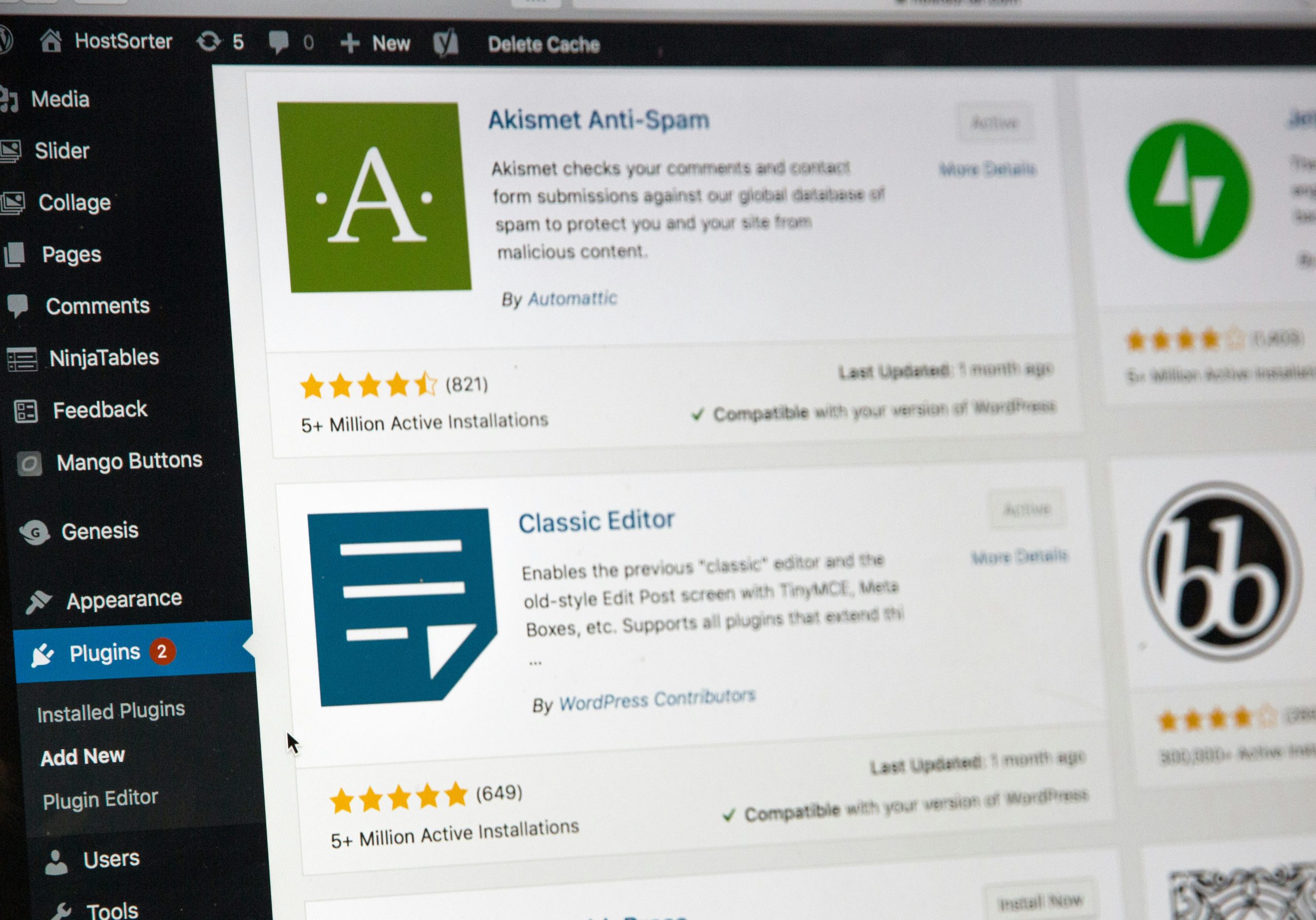In the intricate dance of WordPress development, hooks serve as the rhythm guiding our creative expression. They allow us to modify functionality and enrich user experiences without altering core files—an elegant solution for any developer worth their salt. However, many find themselves entangled in a web of external global variables, leading to code that is not only clunky but also difficult to maintain. Is it possible to harness the power of WordPress hooks while sidestepping this common pitfall?
The answer is a resounding yes! In this article, we will explore innovative techniques that empower you to utilize WordPress hooks effectively without relying on external globals. By leveraging best practices and structured approaches, you can achieve cleaner, more efficient code that enhances both performance and readability. Whether you’re a seasoned developer or just dipping your toes into the world of WordPress customization, join us as we unlock the secrets to mastering hooks with finesse and clarity—no strings attached!
What are WordPress Hooks?
WordPress hooks are powerful tools that allow developers to extend the functionality of their websites without modifying core files. Essentially, there are two types of hooks: action hooks and filter hooks. Action hooks enable you to execute your custom function at specific points in the WordPress execution flow, while filter hooks let you modify data before it is sent to the database or rendered on the screen. This flexibility fosters a modular approach to building themes and plugins, allowing developers to easily integrate new features without disrupting existing code.
One of the most intriguing aspects of utilizing WordPress hooks is their role in enhancing collaboration within development teams. By clearly defining where custom functionalities will be executed or altered, different team members can work independently on separate features without risking conflicts in global variables or functions. This paves the way for cleaner code architecture tailored for scalability, making projects easier to maintain over time as they grow more complex. Understanding and effectively implementing these hooks not only leads to streamlined workflows but also cultivates a better user experience by allowing seamless integration and dynamic interactions on your site.

Importance of Avoiding Global Variables
Avoiding global variables in WordPress development is crucial for maintaining a clean and manageable codebase. When you rely on global variables, you risk creating a tangled web of dependencies that can make your code difficult to understand and debug. As multiple functions modify the same global state, tracking down the source of an issue becomes increasingly challenging. This not only leads to potential bugs but also slows down development as teams spend additional time unraveling unintended interactions.
Moreover, embracing local scopes and parameter passing fosters better modularity within your code. By encapsulating behaviors within functions or using class-based structures, developers can create reusable components that are independent yet synergistic. This practice enhances code readability and maintainability while promoting more effective collaboration among team members. With clear boundaries around data management, changes to one part of your application are less likely to inadvertently break another section—creating a smoother development experience.
Ultimately, moving away from global variables encourages best practices in software design, such as dependency injection and reduced coupling between components. Not only does this lead to more robust applications, but it also positions developers for scalability in their projects as they grow over time. In a WordPress environment where flexibility is key, adopting these strategies will empower developers to build dynamic solutions without compromising the integrity of their code.
Types of Hooks: Actions and Filters
When diving into the realm of WordPress hooks, understanding the distinction between actions and filters is crucial for leveraging their full potential. Actions allow developers to execute code at specific points in the WordPress lifecycle, effectively enhancing functionality without altering core files. For instance, utilizing an action hook to inject custom scripts or styles in your theme can optimize performance and streamline user experience. This flexibility not only promotes cleaner code but fosters seamless integrations within third-party plugins.
On the other hand, filters provide a powerful mechanism for modifying existing data before it’s displayed on the site or saved in the database. By tapping into filter hooks, developers can manipulate elements such as post content or metadata effortlessly, crafting personalized experiences without risking instability. Imagine refining a product description based on user behavior—filters empower you to transform what users see dynamically while minimizing overhead by keeping track of internal state without relying on global variables. Such capabilities underscore how actions and filters play vital roles in building maintainable, future-proofed WordPress solutions that align perfectly with evolving digital landscapes.

Best Practices for Using Hooks
When working with WordPress hooks, understanding the context in which they operate is paramount. One of the best practices is to utilize local variables instead of global ones to retain state within your functions. This approach not only enhances clarity but also reduces the risk of unintended side effects elsewhere in your codebase. By passing data through parameters, you create a clear flow of information that makes debugging more straightforward and helps maintain separation of concerns.
Additionally, consider organizing your hooks by grouping related functionality into classes or namespaces. This encapsulation allows for better management and increases reusability across different parts of your theme or plugin. It also paves the way for implementing functionality derived from dependency injection principles, leading to cleaner, more modular code that can be tested independently. Embracing these strategies encourages a disciplined development environment while leveraging Hooks effectively—ultimately enhancing both performance and maintainability in your WordPress projects.
Creating Custom Hook Functions
Custom hook functions in WordPress offer a powerful way to extend site functionality while maintaining clean and manageable code. By encapsulating behaviors within these hooks, you not only avoid the pitfalls associated with external global variables but also foster modularity and reusability throughout your theme or plugin. This allows developers to implement intricate features with minimal shared state, thus enhancing maintainability.
When crafting custom hook functions, consider leveraging the `do_action` and `add_filter` constructs for broader versatility. By defining clear parameters within your hooks, other developers can easily interact with your code without delving into its internals. For example, if you’re creating a hook for a custom post type display, providing context through additional arguments enhances usability—allowing others to seamlessly integrate their functionalities without any friction.
Moreover, consistent naming conventions play a crucial role in avoiding conflicts and enhancing clarity. Use prefixes that are unique to your theme or plugin when naming your hooks; this step ensures that they remain distinct in the vast ocean of WordPress plugins. Investing time in thoughtful documentation alongside these custom hooks further enriches user experience—offering guidance on how best to utilize them while showcasing their value as part of an overall extensibility strategy within WordPress development.

Managing Data Within Hook Functions
When managing data within hook functions in WordPress, it’s crucial to maintain a clean and efficient codebase. One of the most effective strategies is to encapsulate data within classes rather than relying on external global variables. By using object-oriented programming principles, you can create a dedicated class that handles all the logic related to your hooks, ensuring that your data remains private and easily manageable. This not only improves readability but also mitigates potential conflicts with other plugins or themes.
Another innovative approach is leveraging WordPress’s built-in features like transients or options API for persisting temporary data across requests. For example, if your hook function needs to process results that will be reused later without cluttering the global namespace, consider storing them as transients. This way, you can retrieve these values seamlessly between different executions while keeping your code modular and streamlined. Embracing this methodology equips developers with versatility and flexibility needed for resilient applications in an ever-evolving ecosystem like WordPress.
Conclusion: Mastering Hooks in WordPress
In the realm of WordPress development, mastering hooks is akin to learning a new language—one that unlocks the power of flexible design and functionality. By leveraging actions and filters wisely, developers can create seamless integrations without relying on external global variables that often lead to messy code and unexpected bugs. This proficiency elevates your projects, enabling them to respond dynamically to user interactions while maintaining clean architecture.
Moreover, understanding the nuances between different types of hooks provides an invaluable framework for customizations that are both efficient and organized. When you embrace this paradigm, every project becomes an opportunity for innovation rather than mere replication. Imagine a future where your WordPress sites are not only more robust but also easier to maintain—a testament to your capability as a developer. The road may require patience and practice, but with dedication, you will find that mastering hooks paves the way toward creating truly unique digital experiences.






